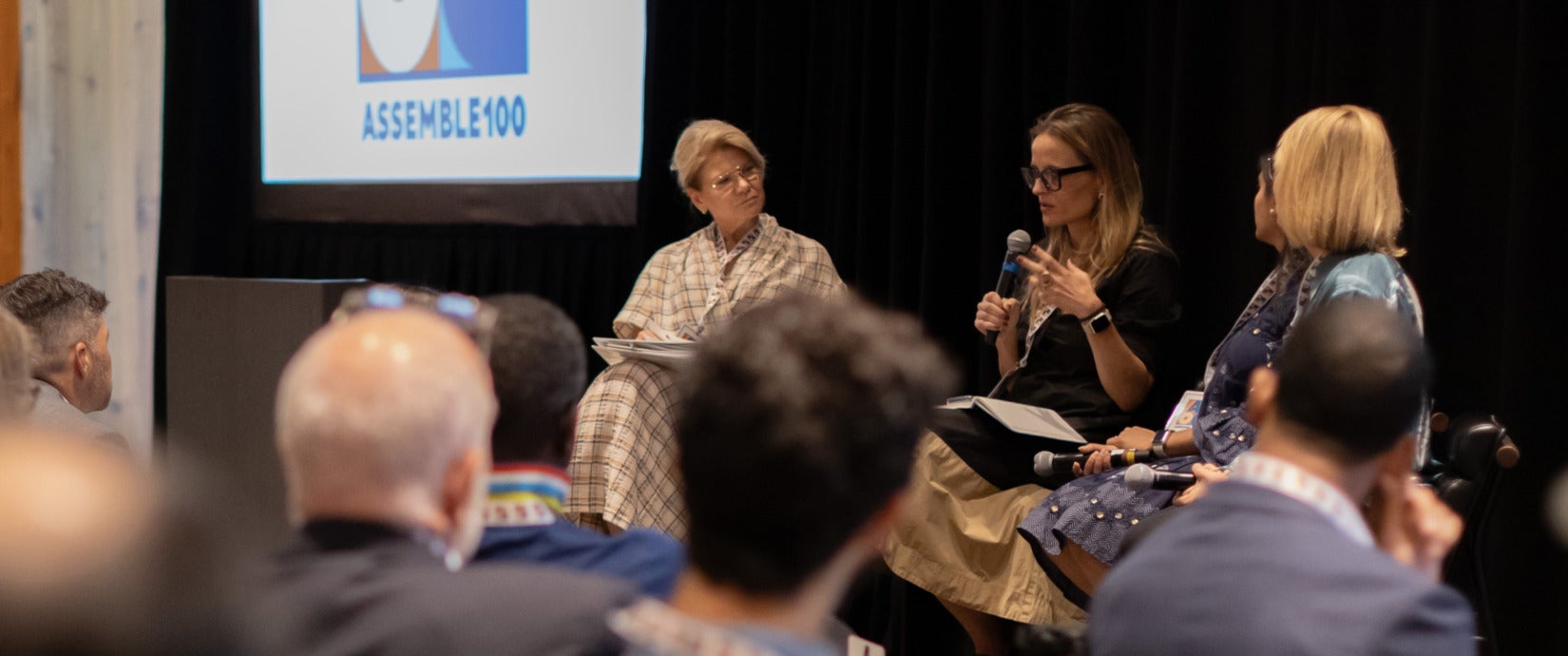How the National Strategy for Financial Inclusion Can Help Households Build Wealth


Personal wealth—the savings and assets a family owns, minus their debts—is a crucial component of household financial well-being. Our work at Aspen FSP shows that people at all income levels value and need the functions of wealth in their lives, enabling them to thrive in the U.S., pursue deeper aspirations, and meaningfully invest in their futures and their communities. When the vast majority of households have sufficient wealth to thrive, it indicates that our economic and social systems are working well and providing people with meaningful opportunities and the support to achieve their goals and invest in their families’ well-being. This widespread household wealth in turn creates a broadly prosperous, stable, strong, and healthy country and communities.
Our research also makes clear that households cannot build and sustain wealth without two things: 1) financial stability, or having the financial resources to comfortably afford everyday life, build savings, and withstand shocks, and 2) ownership of assets that can grow in value such as real estate and investments (like stocks, bonds, and mutual funds) held in retirement or individual retail accounts. Because beneficial use of well-designed financial products and services is a key part of what allows people who have wealth to amass and maintain it, a well-functioning and fully inclusive financial system is critical to democratizing wealth and ownership in the U.S.
This understanding undergirds the U.S. Department of the Treasury’s National Strategy for Financial Inclusion. As my colleagues have written, this strategy significantly advances the field of financial inclusion by emphasizing that financial systems must serve consumers effectively, not just accessibly, and by recognizing that overlooked components of the financial system, including savings, investments, and public benefits, are in fact essential tools for resilience and wealth building. The strategy articulates a financial inclusion continuum, from financial access, to financial resilience, to financial well-being and wealth building, that demonstrates how financial products and services have a key role to play in the wealth building process, from financial stability to the acquisition of assets that can grow in value.
“The ability to fully and beneficially participate in the financial system is a foundation for household financial resilience, well-being, and the opportunity to build wealth.”
— National Strategy for Financial Inclusion
Our analysis of household finance data from the COVID-19 pandemic demonstrates proof of concept for this continuum. Between 2019 and 2022, households of all types in the U.S. achieved historically large growth of their net worth. Median household wealth grew by 37 percent, in just three years. While the economic conditions of 2020-2022 were extraordinary, they provide foundational insights into the dynamics of widespread wealth creation:
The federal government provided unprecedented levels of cash assistance and expanded safety net benefits, and a strong labor market further bolstered household financial stability.
With improved financial stability, people:
Importantly, these gains did not only accrue to wealthier households. Households in the bottom half of the wealth distribution, and households of color, saw some of the highest growth rates, though of course from a much lower base than their wealthier counterparts. This data demonstrates the critical role that financial stability plays in the wealth building process for all households.
But this historic period of rapid wealth growth also demonstrates that the real wealth building power is in market investments. In dollar terms (as opposed to growth rates), the primary drivers of wealth gains were the increased values of homes and financial assets (which for most households are held in retirement accounts). For example, while renters’ median wealth increased by $3,100 to a historic high of $10,400, homeowners’ median wealth increased by $101,000 to nearly $400,000—40X the net worth of renters. Which is why in addition to our work to advance household financial stability, Aspen FSP is laser focused on democratizing access to ownership of assets that can appreciate in value, from real estate of all kinds to financial assets held in early wealth building accounts, retirement accounts, and more.
Success will require the vision and dedication of leaders across sectors. The National Strategy for Financial Inclusion rightfully highlights the important roles that government, financial institutions, and employers all have to play in household wealth building, be it providing capital for homebuyers and investing in community providers of financial services in underserved communities, creating the policy infrastructure for retirement savings, or directly facilitating the ability of workers to build wealth through financial assets in workplace retirement savings plans.
And there’s another set of key stakeholders who are animated by the possibilities for transforming wealth and ownership opportunities in the U.S. and poised to drive impact at scale: the private investors and funders who are financing the future of wealth and the entrepreneurs and innovators who are developing and scaling new asset ownership onramps. Aspen FSP’s research and convening with these leaders has demonstrated the potential of emerging wealth innovation tools to move U.S. households along the financial inclusion continuum and toward meaningful wealth building.
Now, as multi-sector leaders begin to implement the recommendations of the National Strategy for Financial Inclusion, Aspen FSP looks forward to collaborating with innovators and investors, employers, financial institutions, and government leaders to build a financial system that provides all U.S. households with the tools to build stability and wealth.

Unexpected expenses can happen without warning—a flat tire, a medical bill, or a sudden pet emergency. Having an emergency fund...

Back Who We Are Our Purpose We ignite human potential to build understanding and create new possibilities for a better...

Property tax appeals platform Pricing is based on an annual subscription Receive a AI-powered property assessment within seconds AI-powered platform...